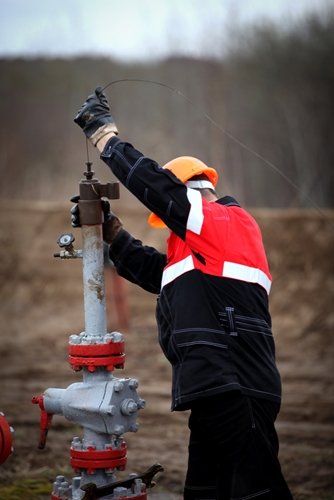How 3D laser scanning improves workplace safety

3D laser scanning technology and modeling software are often used together to create accurate, as-is models of sites and workplaces to give managers and engineers a better understanding of the existing structures. But these tools have more benefits than just helping with infrastructure improvements. Worker safety in numerous industries can be improved through the use of these tools.
Laser scanning and modeling can give petrochemical facility managers, construction professionals and mining operation supervisors the ability to identify workplace hazards they may not have been able to otherwise. With its high-level of precision, a laser scanner can gather data on existing conditions within workplaces that other types of measurements would be unable to deliver. 3D laser scanners can be employed as effective safety tools – they can aid in finding cracks in petrochemical pipes and showcasing improperly placed equipment to determining if the slope of a worksite has the potential to put workers' well-being at risk. The information these tools collect can then be used to improve onsite safety measures and inform what types of equipment employees need to stay safe in these environments. The gathered data can also be archived for worksite and facility managers to access as a baseline when needed, showcasing how a workplace or site has changed or improved since the first scan was completed.
Here are three industries that have already seen workplace safety improvements due to using 3D laser scanning and modeling:
Industrial operations
Power plants are extremely hazardous workplaces, and safety is crucial in these environments. According to Spar Point Research, 3D laser scanning is especially useful in industrial environments because the technology is able to pinpoint potentially dangerous situations in these workplaces. Spar noted safety is only accomplished through preparations and knowledge of the environment, and 3D scanners offer the most accurate, in-depth information about these workplaces.
According to Spar, the Chevron Corporation used laser scanning at one of its oil platforms to specifically assess previously areas of the worksite that had been damaged during Hurricanes Ivan and Katrina. Nuclear power plans have also used the technology due to health and environmental concerns at facilities, Spar reported, because safeguarding workers from radiological hazards in these worksites became a major focus in the industry.
Construction
The construction industry is known to be one of the most risky industries. Construction work is so hazardous that, according to the U.S. Occupational Safety and Health Association (OSHA), construction has it's own list of fatal on-the-job injuries that are common in these worksites. Of all workplace deaths in 2012, 19.3 percent took place just in the construction industry.
According to the Dallas/Fort Worth Healthcare Daily, accurate 3D modeling has been integral to improving safety measures in the health care construction industry. There are strict standards set forth by OSHA as to what workplace safety measures employers in the construction industry have to follow, but technology is important to reducing the number of accidents onsite while still keeping productivity high. 3D laser scanning is helping to improve these technologies, such as through helping the prefabrication process of various materials used in construction.
Mining
Mines are another famously hazardous workplace environment, but 3D laser scanning is helping to measure ground adjustments and the overall stability of mines. According to Mining Weekly, a laser scanning system map pit slopes and slope stability at a gold mine in Tanzania, which gives mine managers information about whether a wall may collapse or not. The technology is a type of early-warning tool that can save miners' lives and prevent the costly loss of equipment.
Preventing workplace accidents is crucial in many industries, and the data collected and digitalized using 3D laser scanning and modeling technology can help employers keep their workers safe.
